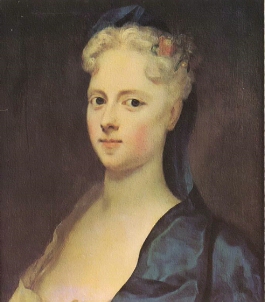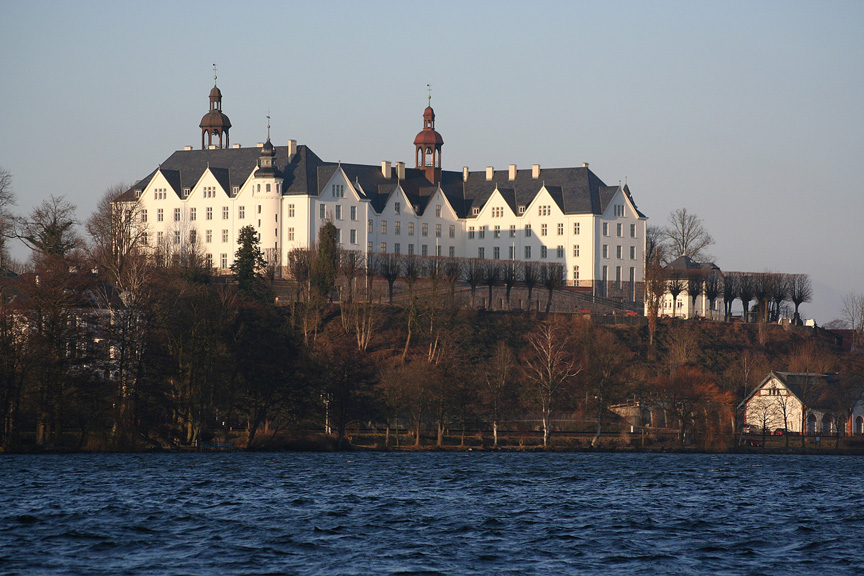|
Frederick Charles, Duke Of Schleswig-Holstein-Sonderburg-Plön
Frederick Charles of Schleswig-Holstein-Sonderburg-Plön (August 4, 1706, Sønderborg – the night of October 18–19, 1761, Traventhal), known as ''Friedrich Karl'' or ''Friedrik Carl'' of Holstein-Plön, was a member of a cadet branch of the Danish royal family and the last duke of the Duchy of Schleswig-Holstein-Sonderburg-Plön (or Holstein-Plön), a Danish royal prince, and a knight of the Order of the Elephant. When he died without a male heir born of his marriage to Countess Christine Armgard von Reventlow, rule of the Duchy of Holstein-Plön returned to the Danish crown. Early life Frederick Charles was born on August 4, 1706, at Sønderborg castle, the posthumous and only son of Christian Charles (1674-1706), a brother of Duke Joachim Frederick of Schleswig-Holstein-Sonderburg-Plön. That duke died in 1722 without closer male heirs than his nephew, who in time succeeded his uncle as partitioned-off duke of Schleswig-Holstein-Sonderburg-Plön. Frederick Charles's ... [...More Info...] [...Related Items...] OR: [Wikipedia] [Google] [Baidu] |
House Of Oldenburg
The House of Oldenburg is a German dynasty with links to Denmark since the 15th century. It has branches that rule or have ruled in Denmark, Iceland, Greece, Norway, Russia, Sweden, the United Kingdom, Schleswig, Holstein, and Oldenburg. The current Queen of Denmark, King of Norway and King of the United Kingdom, as well as the former King of Greece, are all patrilineal descendants of the Glücksburg branch of this house. The dynasty rose to prominence when Count Christian I of Oldenburg was elected as King of Denmark in 1448, of Norway in 1450 and of Sweden in 1457. The house has occupied the Danish throne ever since. History Marriages of medieval counts of Oldenburg paved the way for their heirs to become kings of various Scandinavian kingdoms. Through marriage with a descendant of King Valdemar I of Sweden and of King Eric IV of Denmark, a claim to Sweden and Denmark was staked as early as 1350. At that time, its competitors were the successors of Margaret I of De ... [...More Info...] [...Related Items...] OR: [Wikipedia] [Google] [Baidu] |
Dorothea Christina Of Aichelberg
Dorothea Christina von Aichelberg (alternative spellings: ''Dorothee'', ''Dorothy'', ''Chritine'', ''Christiane'', ''von Echelberg'', ''von Aichelburg''; 23 January 1674 in Plön – 22 June 1762 in Reinfeld) was the spouse of Prince Christian Charles of Schleswig-Holstein-Sonderburg-Plön-Norburg as ''Frau von Karlstein''. Later, as a widow and mother of Frederick Charles, she stood for many years at the center of a succession dispute. Life Dorothea Christina was the daughter of Johann Franz von Aichelberg (1629-1692), '' Hofmeister'' and bailiff in Norburg, and his wife, Anna Sophia von Trautenburg gennant Beyer (1637-1694). Her father belonged to a Roman Catholic Carinthian family whose nobility had been confirmed as of the early 16th century. In the Habsburgs' Hereditary Lands the Aichelbergs' would receive elevation to the baronial title in 1655 and to the comital title in 1787. As a young woman Dorothea was court lady of Duchess Elizabeth Charlotte. After the deat ... [...More Info...] [...Related Items...] OR: [Wikipedia] [Google] [Baidu] |
Quedlinburg
Quedlinburg () is a town situated just north of the Harz mountains, in the district of Harz in the west of Saxony-Anhalt, Germany. As an influential and prosperous trading centre during the early Middle Ages, Quedlinburg became a center of influence under the Ottonian dynasty in the 10th and 11th centuries. The castle, church and old town, dating from this time of influence, were added to the UNESCO World Heritage List in 1994 because of their exceptional preservation and outstanding Romanesque architecture. Quedlinburg has a population of more than 24,000. The town was the capital of the district of Quedlinburg until 2007, when the district was dissolved. Several locations in the town are designated stops along a scenic holiday route, the Romanesque Road. History The town of Quedlinburg is known to have existed since at least the early 9th century, when there was a settlement known as ''Gross Orden'' on the eastern bank of the River Bode. It was first mentioned as a to ... [...More Info...] [...Related Items...] OR: [Wikipedia] [Google] [Baidu] |
Dynasty
A dynasty is a sequence of rulers from the same family,''Oxford English Dictionary'', "dynasty, ''n''." Oxford University Press (Oxford), 1897. usually in the context of a monarchical system, but sometimes also appearing in republics. A dynasty may also be referred to as a "house", "family" or "clan", among others. Historians periodize the histories of many states and civilizations, such as Ancient Iran (3200 - 539 BC), Ancient Egypt (3100 – 30 BC) and Ancient and Imperial China (2070 BC – AD 1912), using a framework of successive dynasties. As such, the term "dynasty" may be used to delimit the era during which a family reigned. Before the 18th century, most dynasties throughout the world have traditionally been reckoned patrilineally, such as those that follow the Frankish Salic law. In polities where it was permitted, succession through a daughter usually established a new dynasty in her husband's family name. This has changed in all of Europe's remaining ... [...More Info...] [...Related Items...] OR: [Wikipedia] [Google] [Baidu] |
Anne Sophie Reventlow
Anne Sophie von Reventlow ( da, Anna Sophie; 16 April 1693 – 7 January 1743) was Queen of Denmark and Norway from 1721 to 1730 as the second wife of Frederick IV of Denmark and Norway. Early life Countess Anna Sophie von Reventlow was born in Clausholm castle as the youngest daughter of Count Conrad von Reventlow, who served Frederick IV as Grand Chancellor, and his second wife Sophie Amalie von Hahn (1664-1722). About Anna Sophie's childhood nothing is known apart from the fact that her upbringing was educationally inadequate: Answered letters show that she made clumsy use of Danish, French and German. She was described as beautiful and lively, with "black, fiery eyes." Spouse by bigamy In 1711 the King encountered Anne Sophie at a masquerade ball in Koldinghus, where the royal family resided that season. He wanted her to become his mistress, which her mother refused to allow. The king abducted her on 26 June 1712 from her parents' estate, Clausholm, with the apparen ... [...More Info...] [...Related Items...] OR: [Wikipedia] [Google] [Baidu] |
Christian Detlev Reventlow
Christian Detlev, Count von Reventlow (1671–1738) was a Danish military leader and diplomat. Biography He was the son of Conrad, Count Reventlow, chancellor of Denmark and his first wife Anna Margarethe Gabel (1651-1678). He was a brother of Christine Sophie Holstein (1672–1757) and a half-brother of Anne Sophie Reventlow (1693–1743), second wife and queen consort of King Frederick IV of Denmark. Reventlow had a military career and fought in the Danish contingent against the French during the War of the Grand Alliance. In 1701 he was sent at the head of the Danish troops to fight the French in Italy during the War of Spanish Succession serving under Prince Eugene of Savoy (1663–1736). He took part in the Battle of Höchstädt in 1704 and he was severely wounded in the Battle of Cassano in 1705. At the Battle of Calcinato on 19 April 1706, Count von Reventlow was pitted against General Louis Joseph de Bourbon, duc de Vendôme (1654–1712) in a battle resulti ... [...More Info...] [...Related Items...] OR: [Wikipedia] [Google] [Baidu] |
Traventhal House
Traventhal House (german: Schloss Traventhal) in the municipality of Traventhal near Bad Segeberg in the southern part of the German state of Schleswig-Holstein was the summer residence of the dukes of Schleswig-Holstein-Sonderburg-Plön. In the 18th century the house was renowned for its Baroque garden, which was the largest and most significant of its kind in the duchies.Dehio: ''Handbuch der Deutschen Kunstdenkmäler. Hamburg, Schleswig-Holstein'', p. 870. On the dissolution of the Duchy of Plön in 1761 the brief heyday of the stately home came to an end. The original house was demolished at the end of the 19th century and replaced by a new building typical of the time in the historicist style. [Baidu] |
Frederick V Of Denmark
Frederick V ( Danish and Norwegian: ''Frederik V''; 31 March 1723 – 14 January 1766) was King of Denmark–Norway and Duke of Schleswig-Holstein from 6 August 1746 until his death in 1766. He was the son of Christian VI of Denmark and Sophie Magdalene of Brandenburg-Kulmbach. Although the personal influence of Frederick was limited, his reign was marked by the progress of commerce and trade, and art and science prospered under his reign. Unlike his parents who were deeply devoted to Pietism, Frederick grew into a hedonist. As regent, he took part in the conduct of government by attending council meetings, but he was afflicted by alcoholism and most of his rule was dominated by able ministers who were influenced by the ideas of the Age of Enlightenment. His ministers marked his reign by the progress of commerce and the emerging industry. They also avoided involving Denmark-Norway in the European wars of his time. Although Frederick V wasn't personally interested in cultural ... [...More Info...] [...Related Items...] OR: [Wikipedia] [Google] [Baidu] |
Lustschloss
In Renaissance and Early Modern German architecture, a ''Lustschloss'' (french: maison de plaisance, both equating in English to "pleasure castle/house") is a small country house or palace which served the private pleasure of its owner, usually the ruler of the area it is located in, and was seasonally inhabited as a respite from court ceremonies and state duties. In France, the Château de Madrid in the Bois de Boulogne, easily reached from Paris, arguably set an example, and Louis XIV similarly holidayed annually from the Palace of Versailles to his nearby Château de Marly, and more frequently used his Grand Trianon, to which the Petit Trianon was added in the following century. There is no common term for such houses in English, and the phenomenon developed especially in the smaller states of Germany, where the ruler was firmly based in one or two main palaces, as opposed to the much larger number available to the monarchies of England, France and Spain (after Henry VIII' ... [...More Info...] [...Related Items...] OR: [Wikipedia] [Google] [Baidu] |
Plön Castle
Plön Castle (german: Plöner Schloss) in Plön is one of the largest castles in the north German state of Schleswig-Holstein and the only one located on a hill.''Schloss Plön'' at www.fielmann-akademie.com. Accessed on 31 Aug 2010. The former '''' of the was built in the 17th century during the and has had a colourful history in which it has, for examp ... [...More Info...] [...Related Items...] OR: [Wikipedia] [Google] [Baidu] |
Rococo
Rococo (, also ), less commonly Roccoco or Late Baroque, is an exceptionally ornamental and theatrical style of architecture, art and decoration which combines asymmetry, scrolling curves, gilding, white and pastel colours, sculpted moulding, and '' trompe-l'œil'' frescoes to create surprise and the illusion of motion and drama. It is often described as the final expression of the Baroque movement. The Rococo style began in France in the 1730s as a reaction against the more formal and geometric Louis XIV style. It was known as the "style Rocaille", or "Rocaille style". It soon spread to other parts of Europe, particularly northern Italy, Austria, southern Germany, Central Europe and Russia. It also came to influence the other arts, particularly sculpture, furniture, silverware, glassware, painting, music, and theatre. Although originally a secular style primarily used for interiors of private residences, the Rococo had a spiritual aspect to it which led to its widespread us ... [...More Info...] [...Related Items...] OR: [Wikipedia] [Google] [Baidu] |







